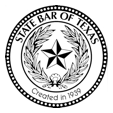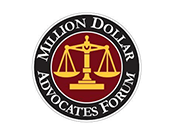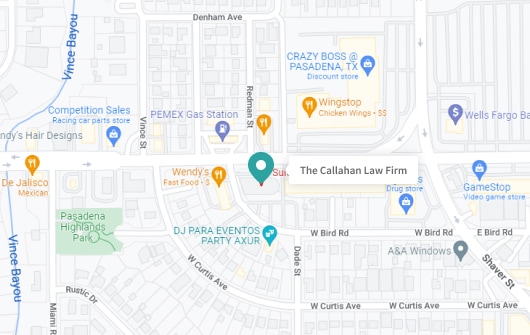Strict Liability vs. Product Liability: Understanding the Distinction

The question of product liability versus strict liability is frequently misunderstood. While both concepts involve holding a party responsible for harm caused by a product, the two legal doctrines are distinct, each with its own criteria and applications.
When someone else’s negligence has injured you, the law provides pathways to hold them accountable. You may have grounds for legal action if a defective product caused your injury. Understanding the interplay between product and strict liability is essential and can affect how you prove your claim.
Bottom Line Up Front
While product liability and strict liability are distinct legal concepts, they can intersect in product-related cases, with strict liability providing a pathway for victims to seek compensation without needing to prove fault. Understanding the distinction and interplay between these terms is crucial for those navigating legal claims involving personal injury or product defects.
What is Strict Liability in Product Liability Cases?
Strict liability claims in product liability cases hold designers, manufacturers, and marketers accountable for product defects. Under this legal theory, the injured party does not have to demonstrate negligence. Instead, they must prove the product was in a defective condition, and this defect made the product unreasonably dangerous, directly leading to injury or harm.
Who Can You Sue for Strict Liability?
If you’ve been injured by a wild animal or a product or activity deemed inherently hazardous, you may be able to file a lawsuit against the animal’s owner or the manufacturer of the dangerous item. You could be entitled to compensation for various damages, such as physical injury and any financial losses you’ve incurred as a result.
In Texas, product liability laws are critical in safeguarding consumers from defective or unreasonably dangerous products while establishing clear guidelines for manufacturers and sellers.
The primary statute governing this area is Chapter 82 of the Texas Civil Practice and Remedies Code, which outlines the responsibilities and potential liabilities of the various parties involved in the production and distribution of products.
At its core, Texas product liability law aims to achieve a balance between protecting consumers’ rights and promoting fair business practices. By holding manufacturers and sellers accountable for the safety and quality of their products, these laws encourage companies to prioritize consumer safety and implement strong quality control measures.
What is Product Liability?
In Texas, product liability laws protect consumers from harm caused by defective or dangerously designed products while providing a clear framework for companies involved in the production and distribution process.
Product liability refers to the legal responsibility and potential liability of the various parties involved in the production and distribution of products.
The goal of product liability law in Texas is to strike a balance between safeguarding public health and safety, and promoting fair business practices. By holding manufacturers and sellers accountable for the safety and quality of their products, these laws incentivize companies to implement stringent quality control measures, conduct thorough testing, and address potential hazards before products reach the consumer. This ensures that consumers can trust the products they buy while also encouraging responsible corporate behavior.
Product liability refers to a legal claim where you seek to hold a manufacturer accountable for injuries you sustained while using their product. Unlike strict liability cases, where fault does not need to be proven, product liability cases require you to demonstrate that the Defendant (the party being sued) was negligent in some way. There are three primary ways to establish negligence in these cases:
Design Defects
This type of product liability claim involves allegations that a product’s defective design makes it unreasonably dangerous for its intended use. Unlike manufacturing defects, these claims focus on the design defect itself rather than manufacturing errors.
Design defects are proven when it must be shown that a safer alternative design was available and that the risks associated with the product outweighed its benefits. This analysis often involves evaluating the product’s intended use and whether a safer design could have been implemented to reduce or eliminate the risk of harm.
Manufacturing Defects
Manufacturing defects arise when a product deviates from its intended design or specifications due to errors during production. For example, a defect in a car’s braking system—such as improperly installed parts—could cause the brakes to fail, endangering the driver and passengers. Similarly, a batch of medication that becomes contaminated during manufacturing could lead to serious health risks for consumers who ingest it.
To succeed in a manufacturing defect claim, the consumer must prove that the defect was present when the product left the manufacturer’s control and that this defect directly caused the injury or harm suffered. Establishing causation is a critical element in these cases, as it is essential to show that the defect was the direct cause of the injury or damage in question. Without proving causation, a manufacturing defect claim is unlikely to succeed.
Failure to Warn
Marketing, or failure to warn, defects occur when a manufacturer or seller fails to provide sufficient instructions, labels, or warnings regarding the correct use of a product or its associated risks. A marketing defect can still arise despite no inherent defect in the product’s design or manufacture.
For example, a consumer may have a valid claim if they are injured due to the manufacturer’s failure to disclose known risks or to offer clear guidance on the safe use of the product. This can include neglecting to warn about potential side effects of medications, failing to provide adequate assembly or usage instructions, or omitting critical safety information about handling or storing hazardous materials.
In these cases, the claim often revolves around the reasonableness of how the product was used and whether the manufacturer or seller should have anticipated the risk of harm in the absence of adequate warnings or instructions.
Who Can You Sue for Product Liability?
If a defective product has injured you, you may have the right to pursue a claim against several parties involved in its design, manufacture, or sale. Depending on the circumstances, you could hold the product designer, the manufacturer, or even the retailer where the product was purchased liable for your injuries. Each party may share responsibility based on the nature of the defect and their role in bringing the product to market.

Get the Legal Support You Need – Contact The Callahan Law Firm Today
Although product liability and strict liability are separate legal principles, they often overlap in product-related cases, with strict liability allowing victims to seek compensation without proving fault. Understanding how these concepts work together is key for anyone dealing with product-related injuries. If a defective product has injured you or a loved one, don’t hesitate to seek legal help.
At The Callahan Law Firm, our skilled product liability lawyers are dedicated to helping individuals and families affected by defective products. Contact us today for a complimentary consultation, and let’s discuss how we can assist you in pursuing the compensation you deserve under the law.
FAQ
Is product liability strict liability in Texas?
In Texas, strict liability applies in product liability cases, meaning that a manufacturer can be held responsible for injuries caused by a defective product, regardless of whether they were negligent in the design or production of the item.
What is the difference between strict liability and liability?
Strict liability eliminates the need to prove fault in certain situations, focusing solely on the harm caused by the dangerous activity or defective product.
Negligence liability requires proving that the defendant failed to meet a reasonable standard of care, which led to the injury.
Which is easier to prove, negligence or strict product liability?
Strict product liability is generally easier to prove than negligence, as it focuses solely on the product’s defectiveness and causation of harm without requiring proof of fault.
What is the difference between strict liability and fault-based liability?
Strict liability does not require proof of fault or negligence, while fault-based liability requires showing that the defendant’s actions or negligence caused the harm.

Michael S Callahan is an attorney and founder of The Callahan Law Firm. He focuses his practice on representing individuals and families in personal injury cases involving motor vehicle and truck accidents, workplace accidents and defective products. With over 25 years of experience, he is dedicated to fighting on behalf of people whose lives have been forever altered by the negligence and carelessness of corporations and individuals. Originally trained as a mechanical engineer, Michael has been practicing law and fighting for justice for those who need it most since 1994. He is board-certified in Personal Injury Trial Law by the Texas Board of Legal Specialization and a member of various esteemed legal associations. Outside of work, Michael enjoys spending quality time with his family, outdoor activities, and continually striving to improve as a trial lawyer and human being.











